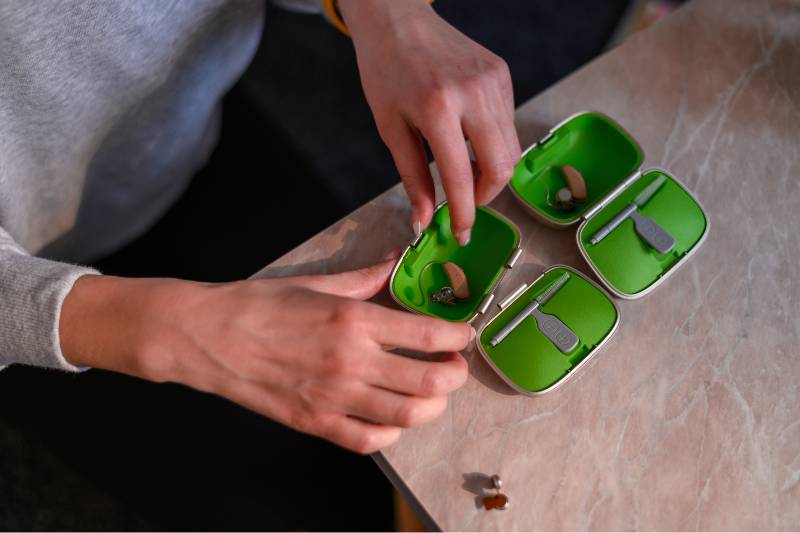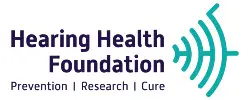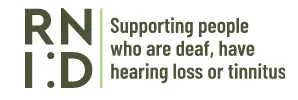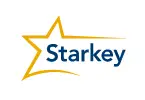Introduction
Deafness refers to a condition where a person has significant hearing loss, making it difficult for them to understand sounds and speech. Deaf individuals may face challenges in daily life and may need to use alternative methods of communication, such as sign language or lip-reading.
Despite these challenges, many deaf individuals lead fulfilling lives and have a rich culture and community. There have been numerous technological advancements and support systems in place to help deaf individuals overcome barriers and succeed in their personal and professional lives.
One example of this is the use of cochlear implants, which are small electronic devices that can restore some level of hearing. There are also schools and programs specifically designed for deaf children, to help them learn and develop social skills.
Deafness can be a journey of both challenges and triumphs, but it is important to remember that deaf individuals are just as capable and deserving of opportunities as anyone else. By understanding and supporting the deaf community, we can help break down barriers and create a more inclusive society for all.
QUIZ - CURRENT RESEARCH ON HEARING LOSS
Synonyms for deafness
Hearing Impairment
refers to a reduced ability to hear sound, ranging from mild to severe loss. It can be caused by a variety of factors including genetics, age, and exposure to loud noises.
Auditory Loss
refers to a reduction in the ability to hear sounds, which can range from mild to severe. It can be temporary or permanent and can impact daily activities such as communication and daily routines.
Hard of Hearing
refers to a mild to moderate hearing loss, where a person may struggle to hear certain sounds but can still understand speech with the use of hearing aids or other support.
Deafness Disorder
refers to a condition where a person has a significant hearing loss, making it difficult for them to understand speech and sounds without the use of assistive devices or alternative forms of communication.
Hearing Deficiency
refers to a reduction in the ability to hear sounds, which can range from mild to severe. It can be caused by a variety of factors and can impact daily activities, communication, and overall quality of life.
Deafness: Types and Causes
Deafness refers to a condition where a person has significant hearing loss, making it difficult for them to understand sounds and speech. There are several different types of deafness, each with its own unique causes and symptoms. Some of the most common types of deafness include conductive deafness, sensorineural deafness, and mixed deafness.
Conductive deafness is caused by a problem in the middle or outer ear, which prevents sound from being conducted effectively to the inner ear. This type of deafness can be temporary or permanent and can be caused by a variety of factors including ear infections, impacted earwax, or a hole in the eardrum.
Sensorineural deafness is caused by damage to the inner ear or nerve pathways that carry sound to the brain. This type of deafness can be permanent and is usually caused by exposure to loud noises, aging, genetics, or certain diseases. Some individuals may be born with sensorineural deafness due to genetic factors or complications during pregnancy or birth.
Alternative Methods for the Deaf
For individuals who are deaf or hard of hearing, alternative methods of communication are crucial for daily life and social interaction. Some of the most common alternative methods include sign language, lip-reading, and written communication.
Sign language is a visual form of communication that uses hand gestures, facial expressions, and body language to convey meaning. There are several different sign languages used around the world, including American Sign Language (ASL) and British Sign Language (BSL). Deaf individuals may use sign language as their primary form of communication, and it is also used in educational and social settings to support deaf and hard of hearing individuals.
Lip-reading, also known as speechreading, is a technique where a person uses visual cues such as mouth movements and facial expressions to understand speech. This can be particularly helpful for individuals with mild to moderate hearing loss, as they may be able to understand some speech with the use of lip-reading. Additionally, written communication such as text messaging, email, and instant messaging can be used as an alternative form of communication for deaf individuals.
Early Intervention for Deaf Children
Early intervention is crucial for deaf children in order to support their development and success. This may include early diagnosis, support for communication and language development, and access to educational and therapeutic services.
Diagnosing deafness in children as early as possible is important, as it allows for early intervention and support to be put in place. This may include hearing tests, developmental assessments, and support from specialists such as audiologists and speech therapists. Early intervention can also help to support the development of communication skills, as well as promoting social and emotional development.
In addition to early diagnosis and support, access to education and therapeutic services is also important for deaf children. This may include special education programs, speech therapy, and cochlear implantation, which is a surgical procedure that can help to improve hearing. These services can help deaf children to develop language and communication skills, as well as promoting academic success and overall quality of life. By providing early intervention and support, deaf children can have the best possible chance for success and fulfillment in life.
A Vibrant Community: Celebrating Deaf Culture
Deaf individuals have a rich and vibrant community, known as Deaf Culture, which celebrates their experiences and language. Deaf Culture is centered around the use of sign language, shared values and beliefs, and a shared history. It provides a sense of belonging and support for deaf individuals, and helps to promote their cultural identity.
One of the key aspects of Deaf Culture is the use of sign language, which is not only a method of communication, but also a cultural tradition and art form. Sign language is unique to each country and region, with its own distinct grammar and syntax. Deaf individuals often view sign language as an important part of their cultural identity and heritage, and it is celebrated and cherished within Deaf Culture.
Deaf Culture also includes a range of social events, clubs, and organizations that bring together deaf individuals to celebrate their culture and promote community. This can include art exhibitions, sports events, cultural festivals, and educational workshops. By participating in these events and activities, deaf individuals are able to connect with others who share similar experiences and perspectives, and feel a sense of belonging within the larger Deaf community. Celebrating Deaf Culture helps to promote awareness, understanding, and appreciation for the deaf experience, and is an important aspect of deaf advocacy and empowerment.
11 ways to improve sleep better with tinnitus
Innovative Solutions for the Deaf Community
In recent years, there have been many innovative solutions created to support the deaf community and improve their quality of life. These solutions range from new technologies and devices to support communication, to educational programs and initiatives.
One of the most exciting innovations in the field of deaf support is the development of new assistive technologies. This includes things like hearing aids, cochlear implants, and captioning technologies that provide real-time text translations of speech. These technologies can help to improve communication and access to information for deaf individuals, and have the potential to significantly improve their quality of life.
In addition to technological solutions, there are also educational programs and initiatives designed to support the deaf community. For example, there are special schools and programs specifically designed for deaf children, which provide a supportive and inclusive environment for learning and development. Additionally, there are organizations and advocacy groups that work to promote the rights and needs of the deaf community, and to raise awareness about the challenges faced by deaf individuals. These innovative solutions are helping to create a more inclusive and accessible world for the deaf community, and are helping to promote equality and empowerment for deaf individuals.
Conclusion
In conclusion, deafness is a diverse and complex issue that affects individuals in many different ways. There are many different types and causes of deafness, and each person’s experience is unique. Despite the challenges faced by deaf individuals, there are many alternative methods of communication that can help to break down barriers and improve access to information and social interaction.
Early intervention for deaf children is essential for building a foundation for success and fulfillment in life. This can involve a range of support services, educational programs, and assistive technologies that help to provide deaf children with the skills and resources they need to succeed.
Despite the challenges faced by deaf individuals, there is a vibrant and supportive deaf community that celebrates deaf culture and promotes equality and empowerment. From innovative technologies and support services, to advocacy and education initiatives, there are many innovative solutions available to help improve the lives of deaf individuals.
Overall, the journey of deafness can be one of both challenges and triumphs. With the right support and resources, however, deaf individuals can overcome obstacles and reach their full potential. Celebrating deaf culture, promoting equality and empowerment, and providing innovative solutions for communication and support are all critical steps in this journey towards a more inclusive and accessible world for deaf individuals.






